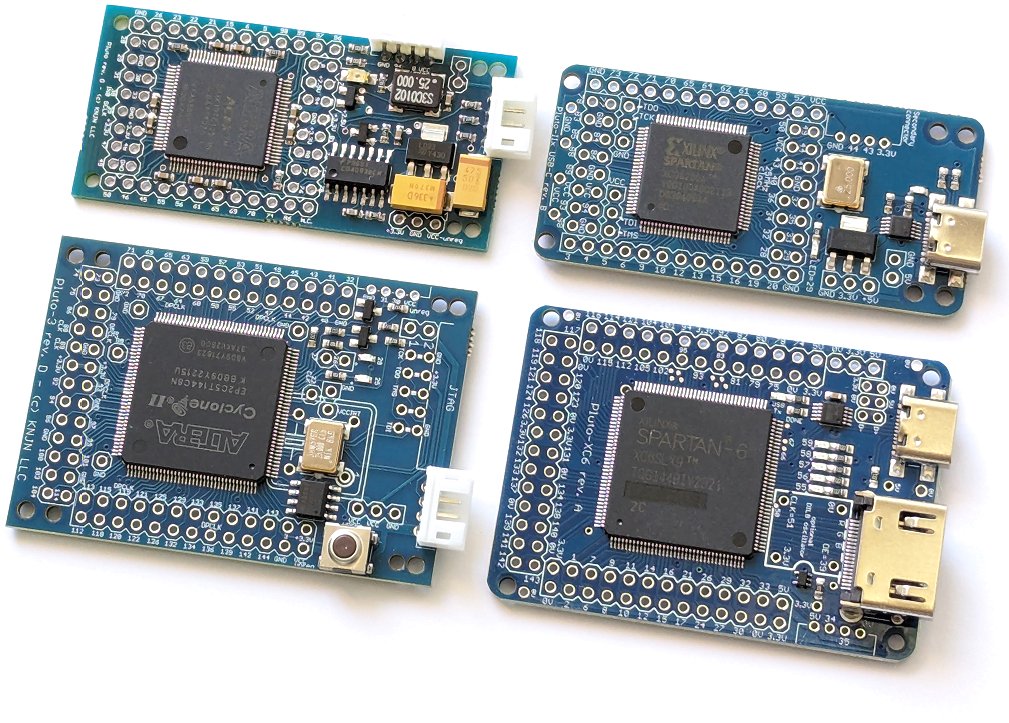

Pluto, Pluto-IIx, Pluto-XC6 and Pluto-3 FPGA boards
FPGA development boards that plug into a PC's USB or serial port.

Characteristics:
- Easy to use.
- Small form factor - go into a 'solderless-breadboard' for experiments, or used as motherboards or daughterboards for other projects.
- Few on-board peripherals, most IOs available to connect to external peripherals.
- Built-in voltage regulator, allows using USB or a common DC adapter as power supply.
- Flashy and Widy compatible (and FlashyD and Widy-D for Pluto-XC6/ and Pluto-3).
What files do you receive with the Pluto boards?
Board files:- Board documentation (view online here) (PDF)
- FPGAconf configuration software (Windows EXE)
- FlashyDemo (FPGA bitfile + GUI)
- LED (HDL source code)
- Music (HDL source code)
- SerialRxTx (HDL + C source code)
- Pong VGA (HDL source code)
- FlashyMiny (HDL + C source code)
To purchase a board
Go to the Shop - FPGA development boards page.